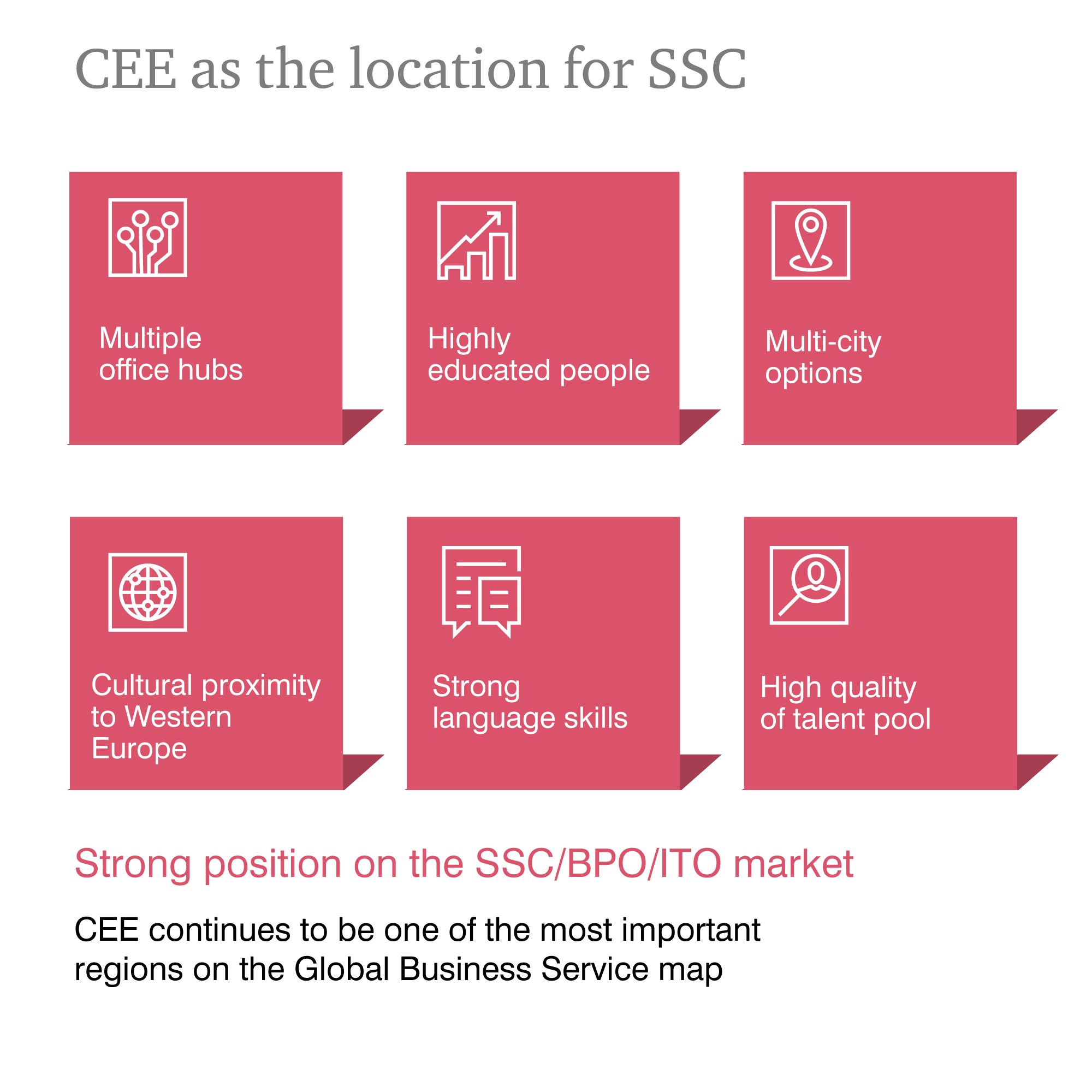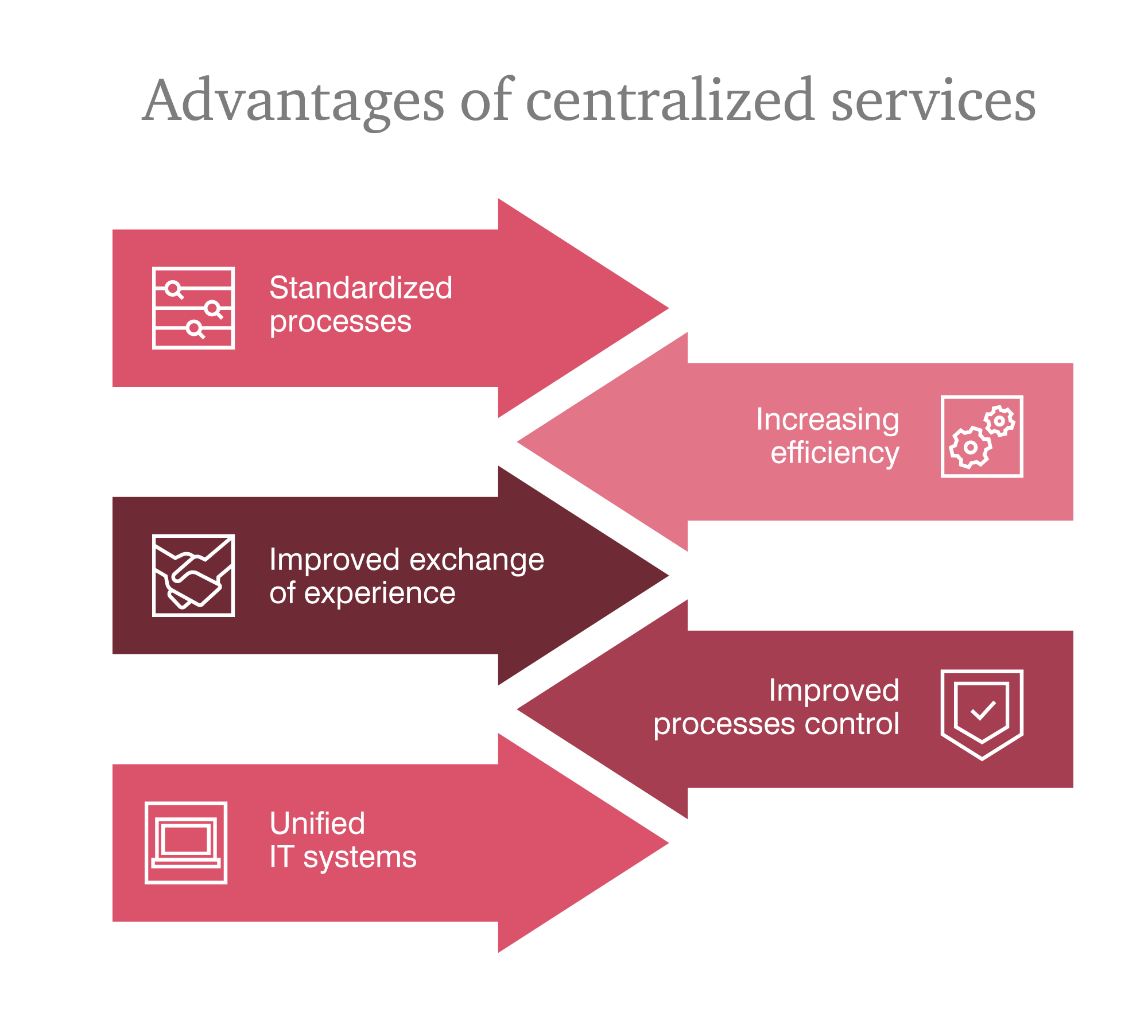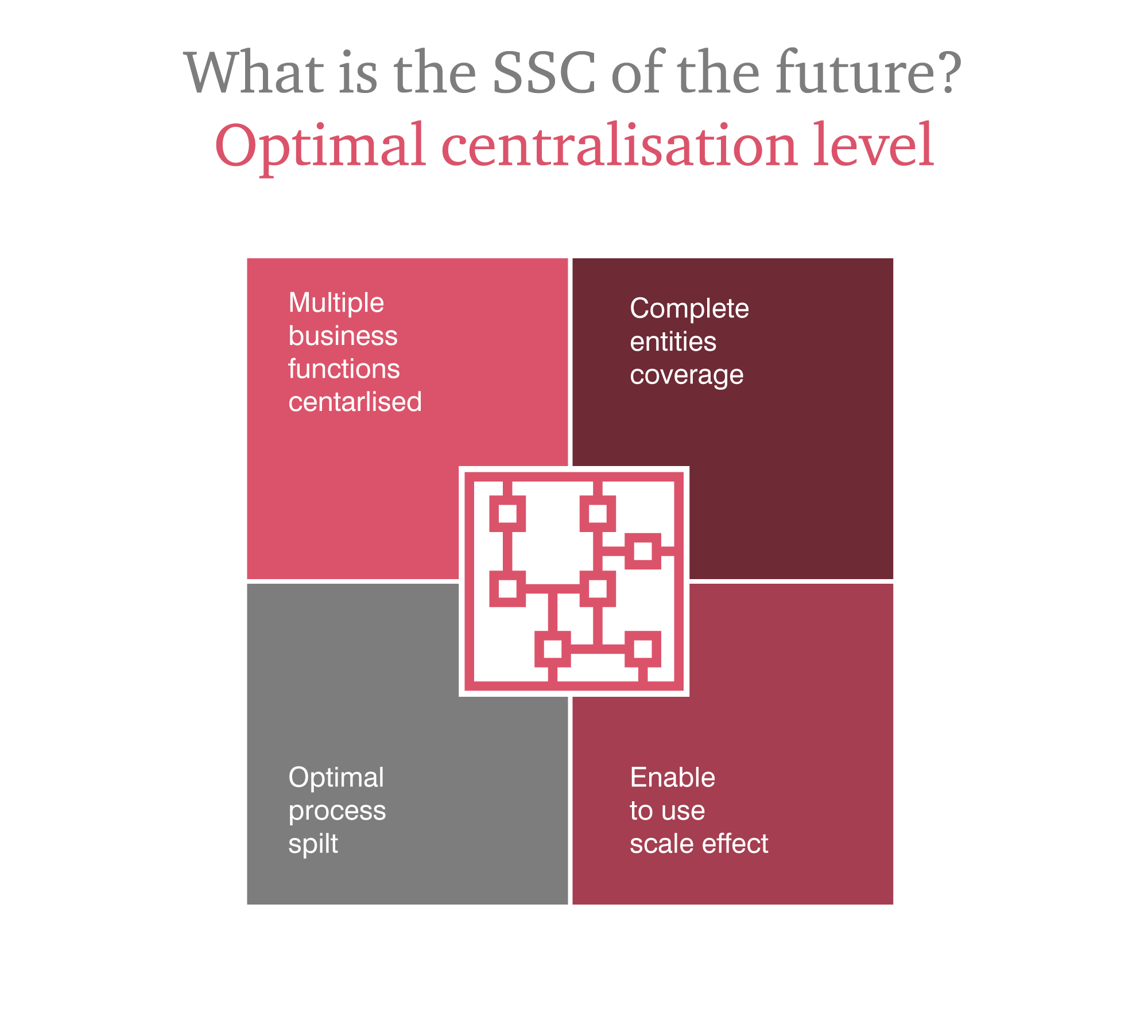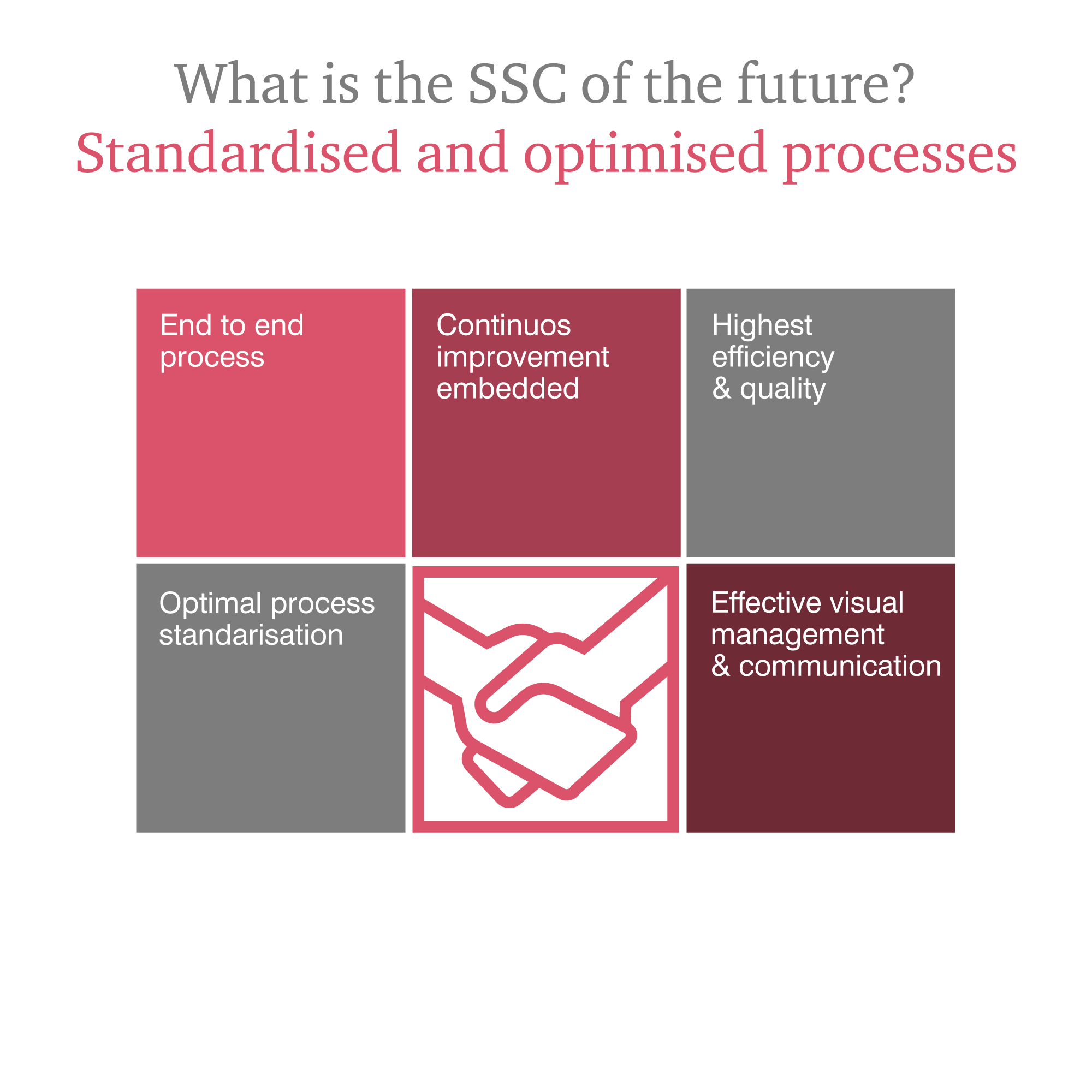
Leveraging the shared services and business process outsourcing models continues to be a major trend on the global market. Numerous benefits of SSC, including: cost reduction, continuous improvement and stronger control environment, are widely recognized.
CEE is the top region of choice for SSC & BPO (Business Process Outsourcing) investments. This is driven by the availability of highly educated staff and a comprehensive investment support system in countries such as Poland, Hungary, Romania and Czech Republic.
Many organisations move along the maturity curve by transferring to SSC more complex processes like: research, product development, cybersecurity, tax & legal services, etc. Best in class Shared Service Centers harness technology, including Robotic Process Automation (RPA) to bring the processes to the next level. SSCs evolve to Global Business Services and transform into Centers of Excellence and strategic partners in the business.

How to process successful and cost-efficient offshoring operations? Explore our solutions
- How your SSC may become a true partner for the organization?
- How to stay compliant?
- How to reach and maintain operational excellence?
- How to attract and retain talent?
- How to keep up with technological advancement?
How your SSC may become a true partner for the organization?
We can support you in overcoming the following obstacles on the way to success:
- SSC being considered a „back-office„ service provider, delivering transactional processes only, without any active role for driving the transformation
- Insufficient motivation or governance structure for the SSC leaders to drive significant improvements
- Lack of a structured customer satisfaction process
- Lack of a proven and tested transition methodology, including the transfer of processes and controls, unclearly defined processes and/or data cut-off points between the SSC and the retained organization
How to stay compliant?
Identified risk areas:
- Need to implement and adhere to the General Data Protection Regulation Compliance Act
- Insufficient awareness of specific risks including strategic, operational, financial, market/customer, people and organisation, technological, regulatory, tax and compliance related.
- Limited awareness of how the processes transferred to an SSC and its design influence the risks for the on-shore entities mainly in tax and regulatory reporting areas
- Changes in other parts of the organization not communicated to and reflected in the SSC process design (risk in tax and regulatory reporting areas for on-shore entities)
- Changing tax regulations influencing both the SSC and the processes transferred to the SSC
- Non-core processes transferred to the SSC or SSC tax compliance efforts (local legal/tax manager’s costs)
How to reach and maintain operational excellence?
We’ll advise you how to identify and avoid the following risks:
- Lack of standardisation between the client's processes and tools
- Little focus on performance management, lack of visibility on the capacity and right workload within the teams
- Broken inefficient processes with significant waste as well as no solid approach for Continuous Improvement
- A gap between how processes are intended to be vs. what they are in reality
- Lack of key controls in the processes resulting in the client being restricted in focussing on factors limiting the risks (tax and regulatory for on-shore entities serviced out of SSC)
- Lack or inadequate process documentation addressing attrition risk
How to attract and retain talent?
Human resources risks you’ll need to consider:
- High expectations from the current generations entering the market (salaries, benefits, work, environment)
- Difficulties in finding right candidates by recruitment
- Ineffective management of compensations and benefits
- Lack of sufficient opportunities to employees to allow them grow and participate in various initiatives
- Salary pressures from the market
- Limited time dedicated by middle-management to work on organisation and staff motivation
How to keep up with technological advancement?
Technological inadequacies that needs to be avoided:
- Multiple IT system platforms in use, causing discrepancies, extra effort such as repeat input of data and/or reconciliations
- Lack of advanced IT solutions that limit errors and ensure highest efficiency (e.g. RPA)
- Limited use of mobile solutions that allow staff to work remotely or with smartphones
- People management decision based on intuition not facts (Artificial Intelligence)
- Lack of awareness regarding available EU funds and tax incentives
- R&D activity fully financed with the company’s funds
Contact us










